The rise and subsequent popularity of the internet were revolutionary in how we operated and saw the world. And no other profession has been so heavily linked to the internet than web development.
While its prominence was initially slow, progress was exponential; giving rise to multiple industries, fast-tracking the existing ones, and reshaping businesses altogether. Websites were once simple document-type pages with, at most, different colored texts and backgrounds.
But they have since evolved to become much more capable and powerful tools for everyone. They function as business placeholders, entire shopping malls, and can even perform double-duty as apps. This capability and flexibility make them challenging to build if you don’t know where to start.
Fortunately, our 2024 guide on web development aims to solve all your burning questions regarding web development, its types, and how to get started with it. By the time you are done reading this article, you will be pointed in the right direction to get your first website operational and live.
What Is Web Development?
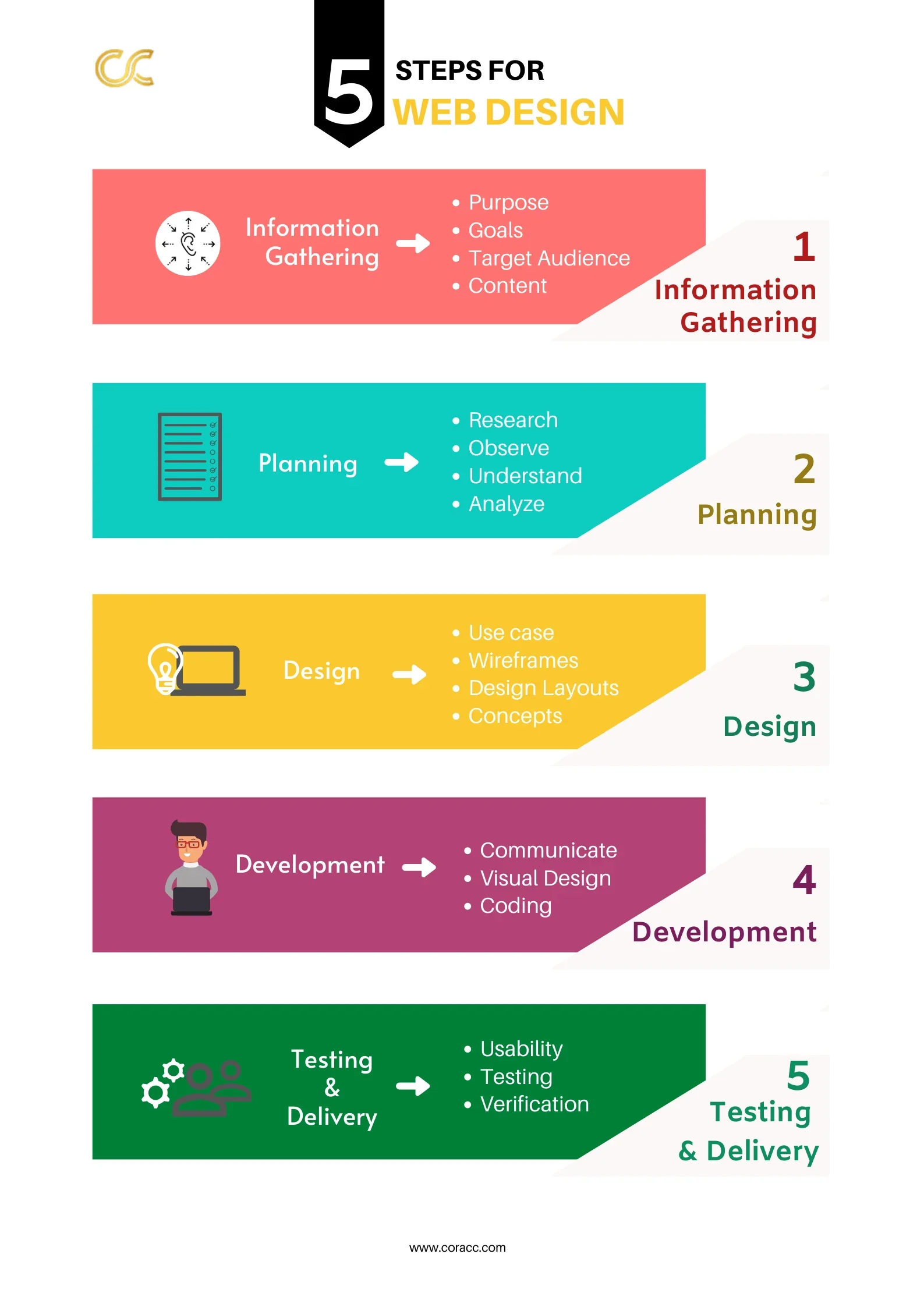
Today, in 2024, you can't build a company without touching web development.
Web development is the process of developing websites or web applications to be run, displayed, and interacted with on the intranet or internet. The web development process includes (but is not limited to) the following tasks:
- Testing
- Website design
- Content development
- Security configuration
- Client-side/server-side scripting
In general, web development refers to all actions and processes that ensure that its user experience, performance, and speed are optimally functioning. It includes:
- Building the website or application for the internet
- Ensuring it is running smoothly
- Maintaining it throughout its lifecycle
- Optimizing it for all platforms and OS
The development process typically doesn’t involve strategic decisions that help websites perform better and rank on search engines, but these are just as important and can be considered an integral part of development.
A software developer is responsible for the development of a website and these programmers employ various programming languages and frameworks for the job. Most even rely on online repositories like GitHub and version control systems like Git to make their jobs easier.
But not all software developers are web developers and specific personnel for this task are called web developers. The most common programming languages used for web development are:
I. Hypertext Markup Language (HTML)
HTML defines the basic framework of a website. The framework is the foundation upon which a website or web application is built. It consists of important elements, such as the page layout, fonts, format, and other critical components.
II. Cascading Style Sheets (CSS)
Web developers use CSS to style the content of a website. They do this with a small set of files kept on the site. For instance, if a web developer needs to edit the color of all buttons on the web pages, they can do this by editing a single file in the CSS.
III. JavaScript
JavaScript is used to handle all interactive elements in a website. It can alter the appearance of drop-down menus, handle animations, run games, and all other demanding and visual elements.
Now let's look at how web development can help businesses now that we've grasped its fundamentals.
The Importance Of Web Development For Businesses
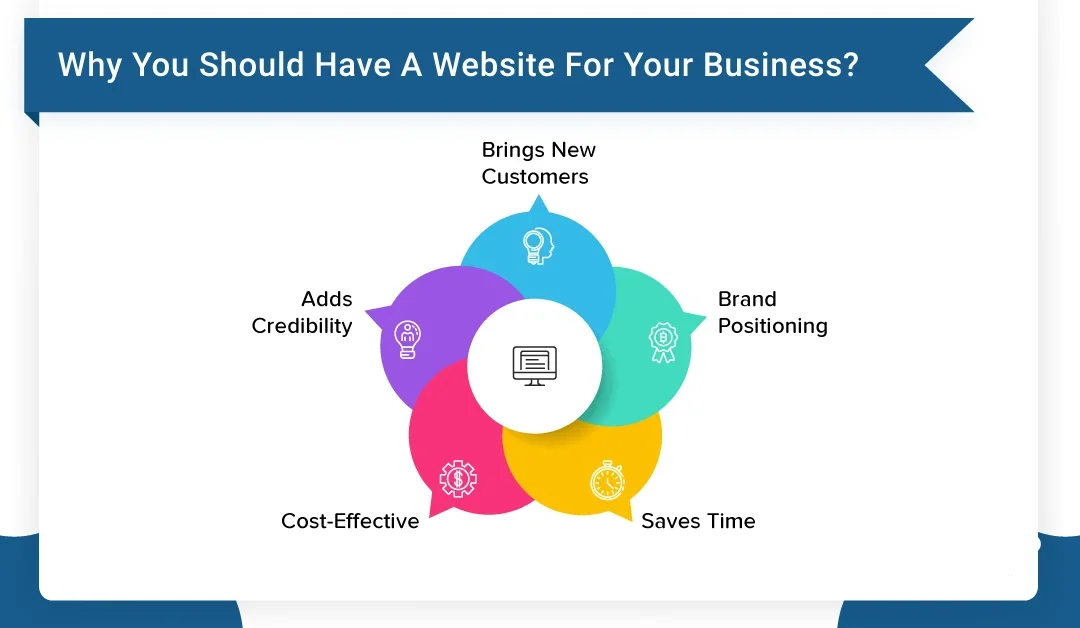
A website or web application is crucial to have in today’s fast-paced and digitalized world. For businesses, it can be especially beneficial as it provides the first mode of contact for you with your clients and customers. Other aspects where it is helping businesses are:
a. Stronger Clientele & Increased Revenues
Gone are the days when business cards made your clientele strong. A well-developed website brings in revenue. It isn’t just applicable to businesses that use websites as corporate placeholders either. Shopping stores have exponentially increased their revenue with the migration to eCommerce and have allowed brands to go global.
b. Ensures More Effective Marketing
The internet of today is a cesspool of the newest trends and businesses vying for the public eye and competing with each other for the top pages of search engines. It is no secret that businesses rely heavily on online presence since most of the world is connected via social media websites, online news channels, and other web apps.
The advertisement and marketing efforts of millions of companies around the world are poured into capturing as many eyes as they can on their products. The top-tier software development companies understand this all too well and bundle marketing and SEO as part of the development package.
c. Improved Customer Services
While sales generation is a vital part of owning a website, customer service is just as necessary for most. Brick-and-mortar stores and businesses offering services instead of products understand this all too well. For them, owning a sizable space on the first pages of Google means their customers can find them with ease and get the customer service assistance they require.
d. Provides Better Chance Of Surviving
A well-developed and optimized website can help your business take charge and compete with the biggest names for the top spot. Consequently, poor web design and development can hurt sales and relegate your company to the bottom of the pack.
e. Facilitates Purchase Decisions
A website with raving reviews and positive testimonials can also set the right first impression for new clients. It can be the mantlepiece detailing your achievements in service and showcasing them to the world. It is your first impression and your best bet at garnering a solid and loyal customer base.
3 Most Common Types Of Web Development
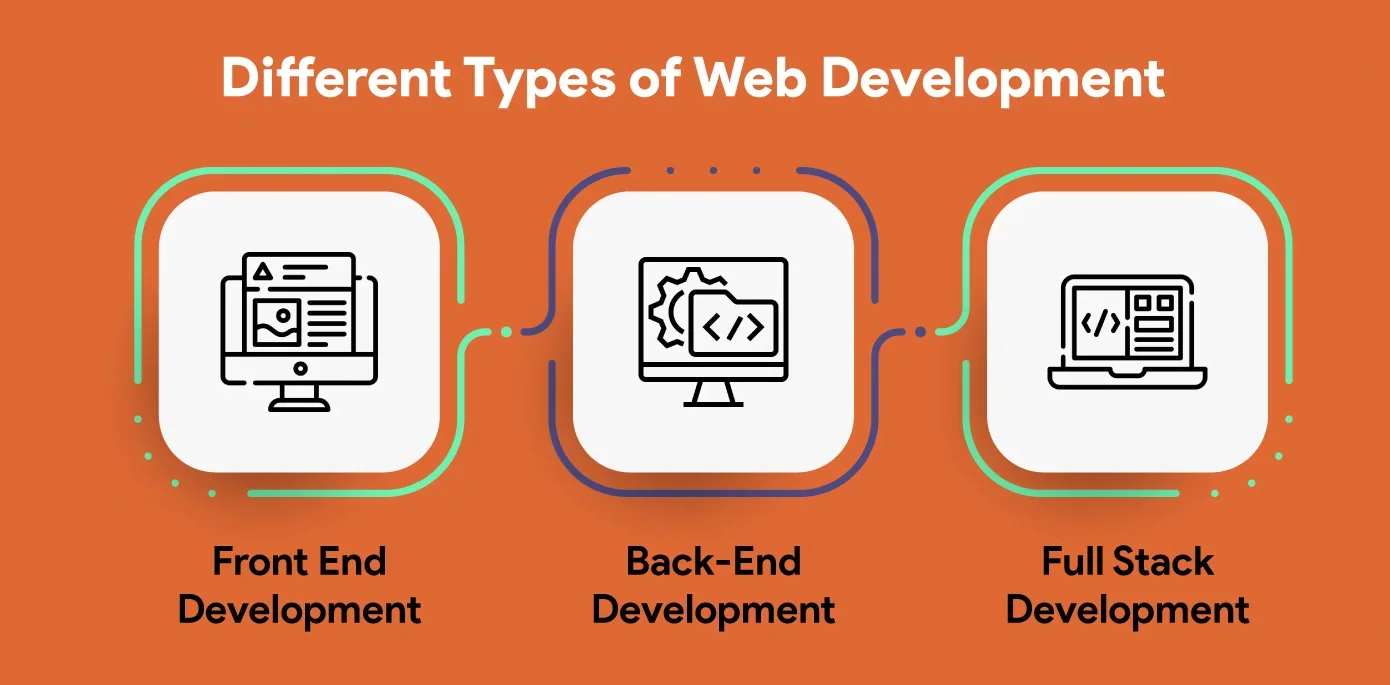
The one aspect of web development that most people get wrong when trying to get one made for themselves, is that they fail to understand the nuances of such construction.
Web development isn’t easy by any means. Although website builders like WordPress and SquareSpace have made it easier for everyone to get started with their custom website, building one to your specific requirements is tasked to skilled web developers.
The process is broken down into three different types:
A. Front-End Web Development
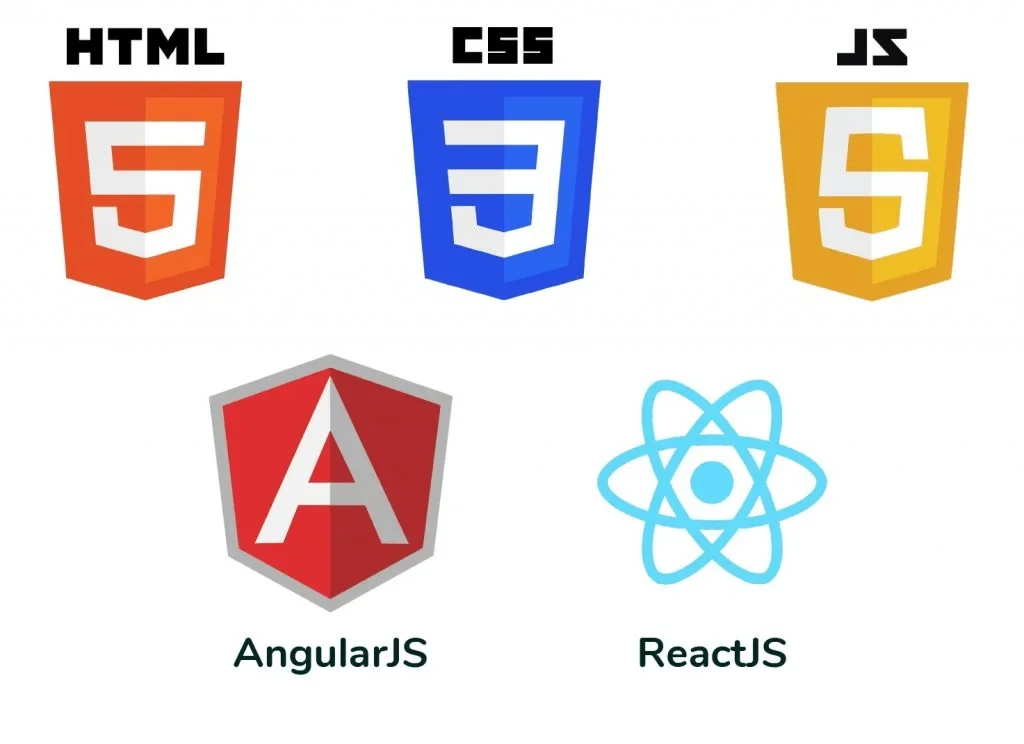
The clue is in the name. Front-end development refers to all aspects of website construction that are placed on the front, i.e. the visuals. To build this part of the website, web developers use:
- CSS3
- ReactJS
- JavaScript
- AngularJS
- HTML (HTML5 in some cases)
Front-end development is also commonly called client-side development, and its biggest challenge is to find skilled developers that can handle its ever-changing requirements and technologies. The front end is made all the more complicated with the introduction of smaller devices, such as smartphones and tablets.
Websites don’t just need to scale properly for these smaller sizes but have to function correctly too while maintaining good UX/UI practices.
B. Back-End Web Development
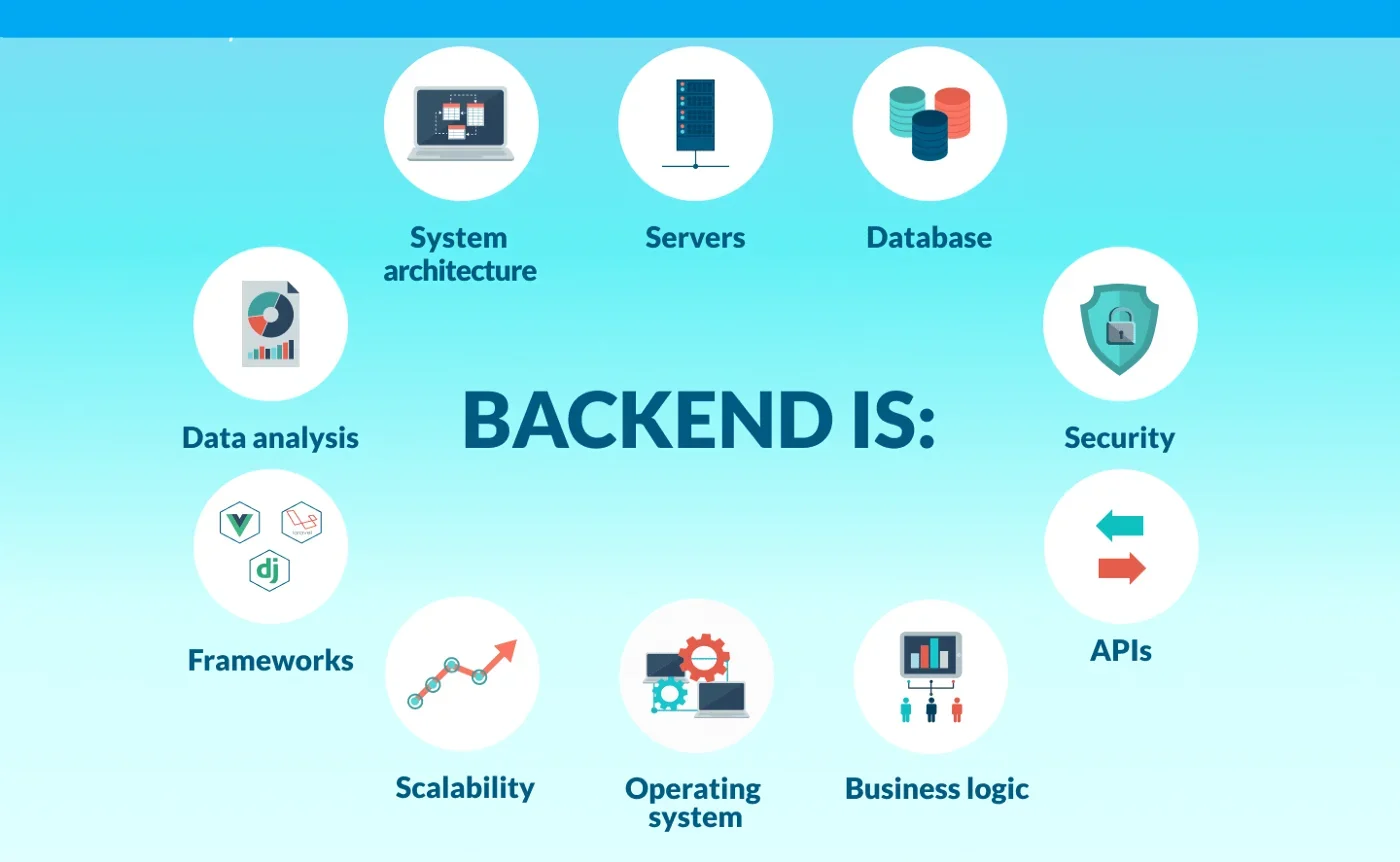
Opposite to front-end development, back-end development refers to server-side work that is required for the website or web app to function correctly. All of the processing takes place behind the scenes and includes the code needed to construct the database, app, and server.
Back-end development includes API integration and database migrations. It also requires a deeper understanding of the languages and technologies at play that make your website work as intended. The APIs and technologies work together to ensure all requests made on the client side do their job. A dedicated developer is needed for this development.
This developer works with a plethora of coding languages and frameworks, including:
- C#
- C++
- PHP
- Java
- Ruby
- Django
- Python
- Node.js
C. Full-Stack Web Development
Since client-side and server-side are essentially opposing forms of web development, a technique is required where the two are the same. Full-stack development refers to this form of development where you onboard a web developer who is skilled at both front-end and back-end development.
A full-stack developer knows the necessary languages to code the visuals after designing them and then running them on the server. They are responsible for the database and debugging of websites and web apps too.
These developers need additional tools to ensure the website is developed properly and efficiently. These tools are typically in the form of frameworks such as:
- JQuery
- Bootstrap
And databases such as:
- Oracle
- MySQL
- MongoDB
6 Types Of Web Development Methodologies
Once the project is decided upon, it is best to familiarize yourself with the methodologies employed to ensure the project completes with the highest quality standards on time. While many web development methodologies exist today, the six most prominent ones in use by many software development firms are:
1. Waterfall
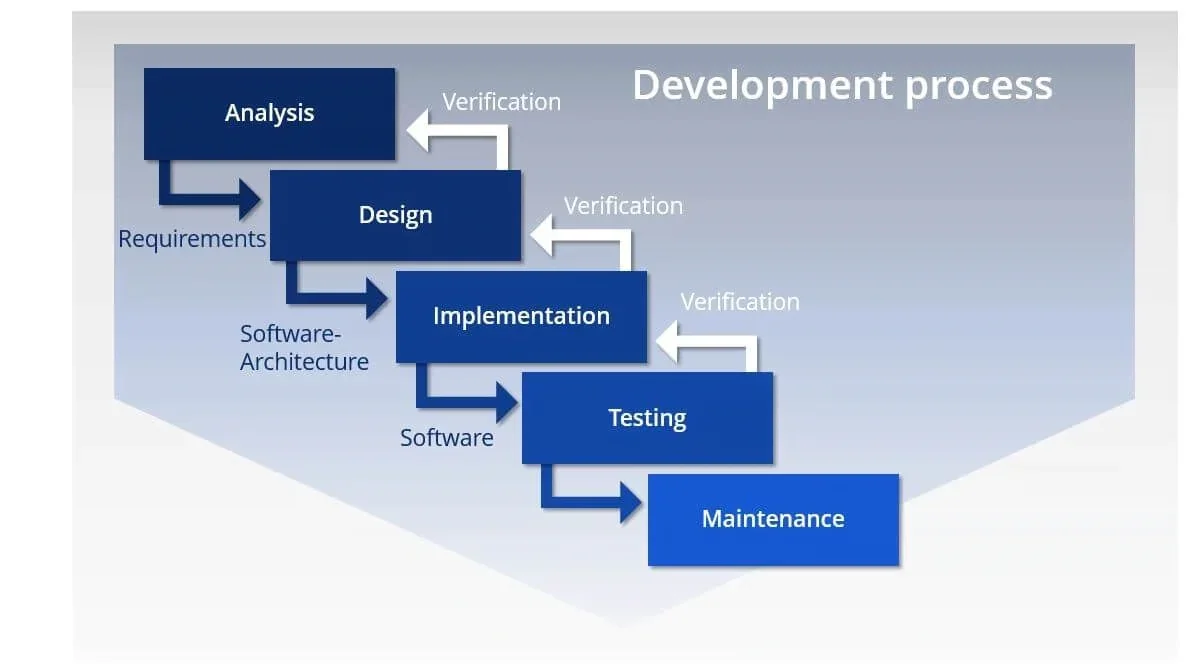
The Waterfall methodology is arguably the oldest and most popular approach to web development. It requires the development team to move in phases, one after the other. For instance, once conceptualization is complete, only then can they move to the planning and construction phases.
This one-after-the-other approach is what lends this methodology its name. In the Waterfall method, moving backward for revisions or corrections is discouraged too. So the only way for developers is forward.
Pros
- Simple to follow and doesn’t demand extensive experience from development teams.
- Provides clear planning guidelines with each member of the team allowed to plan their contributions at each phase.
Cons
- Does not allow room for revisions and corrections.
- Project trajectory cannot change once it has begun.
2. Agile
Agile is one of the most revolutionary methodologies to date with many others being direct inspirations and derivations of it. All of this is true since Agile was formulated to be in direct opposition to the Waterfall method, and can today be best understood as a team mindset rather than a software development methodology.
In Agile, projects are broken down into smaller chunks or “sprints” that are focused on finding solutions to problems. These sprints are distributed amongst everyone in the development teams.
The point is to engage everyone in the problem-solving and construction element with revisions and testing all taking place at the same time.
Pros
- Can adapt to changing requirements that may come as the project progresses.
- Sprints ensure the product is delivered on time with consistent quality standards.
Cons
- Can make estimations on time and cost difficult for the client.
- Can give the appearance of not having a finite end since progression can seem never-ending.
3. Scrum
Scrum is a derivation of Agile and can be viewed as a strict adaptation of it. Similar to Agile, Scrum is broken down into smaller bits called sprints with the difference being that sprints are locked with time limits (typically 1-2 weeks).
During this time limit, all team members working on the development devote their attention and time to completing the challenge at hand. Once the sprints are complete, stakeholders and the team review any changes and plan the next sprint accordingly. It demands discipline and strict regulation of time and resources.
Pros
- With set periods, team members can dedicate their focus and attention to one task at a time.
- With meetings and reviews, changes are made in real time without needing to wait for the project to finish first.
Cons
- Challenging to implement as it requires experienced personnel.
- Chances of project failure can increase if the team isn’t dedicated to the project.
4. Kanban
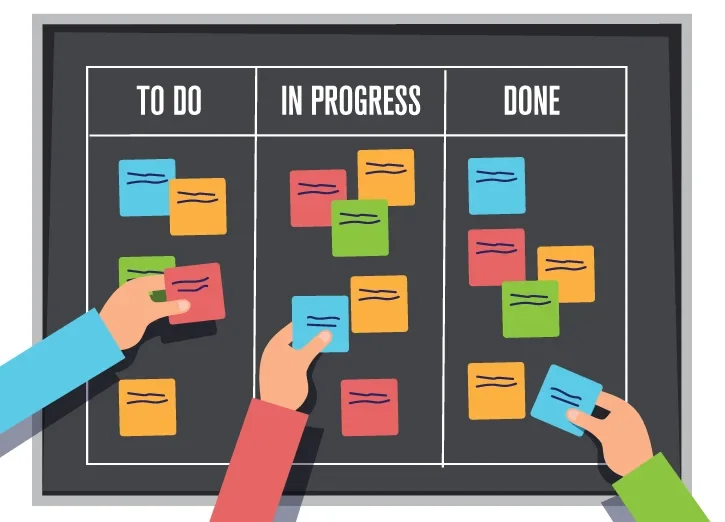
Kanban is another derivation of Agile and can be implemented independently or with other methodologies, such as Scrum. The element that separates it from the rest of the methods is the use of the Kanban board.
This board details the different stages of the lifecycle and only allows teams to move to the next stage once the subsequent one is complete.
Pros
- The team’s workload is evenly distributed.
- The Kanban board keeps all members of the team organized and on the same page regarding progress.
Cons
- Consistent updating of the Kanban board is required.
- Can be a bottleneck with lengthy or complicated web development projects.
5. Lean
Lean is yet another derivation of Agile with a singular goal of reducing waste in all aspects of the software development lifecycle (SDLC). These instances can be:
- Bloated code
- Duplicated efforts
- Miscommunication
- Other quality issues
To achieve this, Lean couples paired programming with test-driven development. Lean also has room to ensure any client changes can be made in the middle of the project.
Pros
- Lean demands extreme efficiency from every member of the development team.
- Is very malleable and can constantly keep up with evolving project requirements.
Cons
- Requires a dedicated and experienced team.
- High demands of efficiency aren’t sustainable for large projects.
6. Extreme Programming
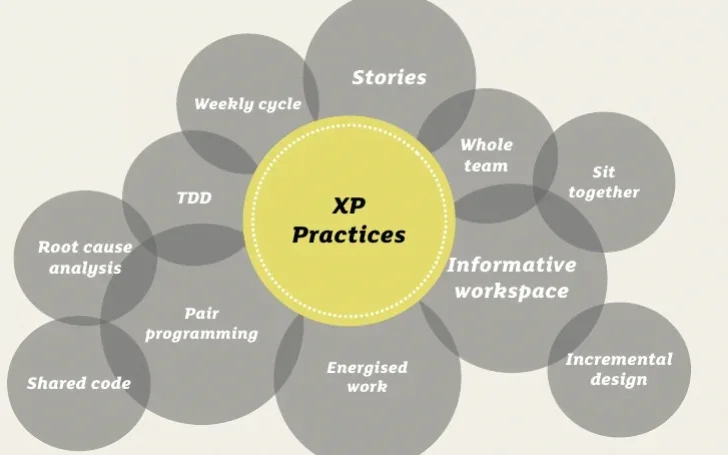
Finally, extreme programming is our last addition to the list of methodologies and it too is a derivation of Agile. Meant for small to mid-level businesses, extreme programming can help emphasize technical parts of the SDLC. It focuses on the methods used by developers and encourages a stable development pace with the highest quality standards.
Pros
- Discourages all unnecessary programming work.
- Encourages thorough and continuous testing for stable software releases.
Cons
- Requires a lot of client participation in the process.
- Can be time-intensive and demand higher implementation costs.
What Are The Steps In The Web Development Process?
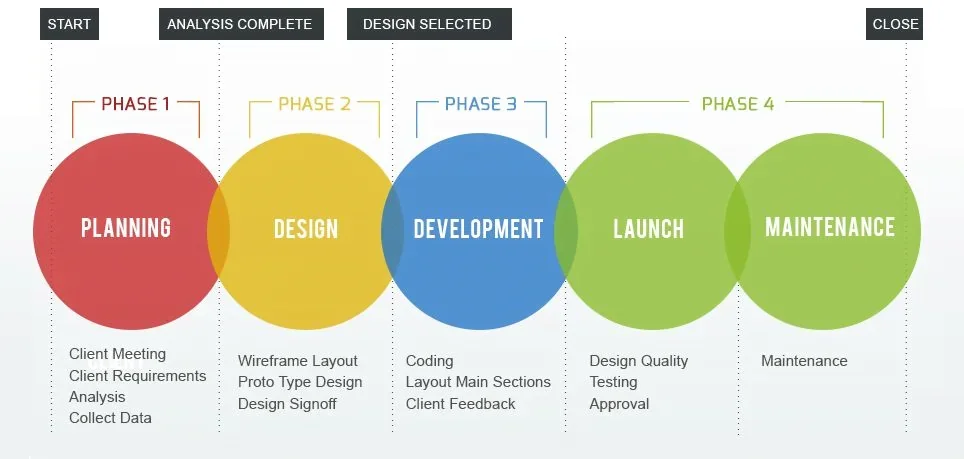
We hope you’re familiar with the web development process and the ins and outs of the entire endeavor by now. While creating websites and applications is commonplace today, finding the right resources to help you start on your journey can be daunting. With these steps, you can easily get your website up and running in no time.
I. Getting The Idea
You need to have a clear objective of what you’re trying to build and what purpose it’ll serve to visitors around the world. Are you building an eCommerce store with the most in-demand products or is your website going to serve as a corporate flag mast for your clients? You need to identify the real-world problem your website solves in advance.
II. Hiring The Right People
While the task can be accomplished using free tools, online tutorials, and a self-taught web development course, the best method is to employ a team of developers who can complete the job for you. Aloa is a great place to source the best personnel for the job.
With a specialization in web development, you can never go wrong with Aloa. Our meticulous vetting process ensures that only the best developers are allocated to your projects.
III. Developing A Plan
As mentioned in the previous section on development methodologies, most processes begin once a plan is in place. This plan will serve as a roadmap for your team to follow to the tee and ensure the website or app is delivered on time and with the highest quality standards (and the fewest bugs).
IV. Designing
The design of a website isn’t just the elements and colors that go into its user interface, but how the website or app behaves and interacts with the user. Ensure you get hands-on experience with the product and test to see if it is to your liking.
V. Implementation
Once the development is complete, web developers move toward the deployment phase. The product is implemented to the desired back-end and CMS (Content Management System) of your choice. Once complete, you can log in to the server side and manage your website easily.
VI. Testing And Deployment
Developers regularly test their code, but once the front and back end are implemented, a final round of debugging commences. It ensures the website or app functions properly, can handle server load, and can withstand security exploits. Once testing is complete, the project goes live.
VII. Maintenance
General updates and maintenance are part of owning a website. Features may become obsolete and need to be replaced with newer ones. Once your website is available to the public, additions and fixes are required. It is the final stage of the project and can enhance the overall quality of your website.
Conclusion
Web development is an integral part of today’s online ecosystem with millions of people and companies competing for their share of the internet. Understanding the finer details of the process and appreciating its intricacy is vital for anyone looking for similar services.
We hope our guide has brought a lot of clarity on the subject and has encouraged you to take the necessary steps to begin your web development project.
With Aloa’s expertise in software development and a capable and driven team of developers working on every product, we understand the frustrations a new web development project can bring. Our solutions can help you hire remote and dedicated development teams at the most competitive prices. If you’re looking to get started today, look no further than Aloa.
For questions and queries, feel free to reach us at [email protected] or visit our website so we can build your next project.

